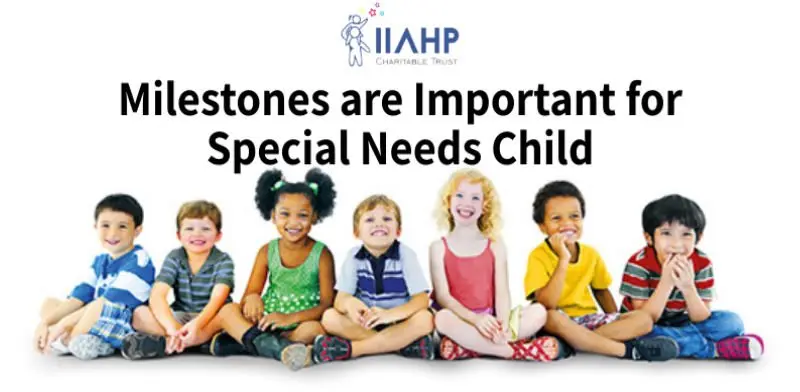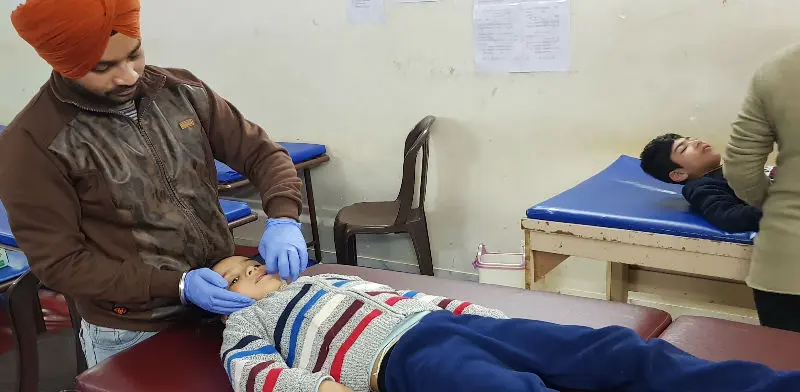Childhood milestones are very important for Children with Special Needs. Milestones are the obvious checkpoints that brain development is not going according to nature’s schedule. This happens when the electrical activity that generates brain growth gets out of timing. There are millions of electrical actions taking place within the brain at any given moment that keep currents flowing like a rushing river. If a child isn’t exposed to the proper stimulation at the right time, or if a sensory pathway is too weak, neurons destined to build a new site and set a new milestone miss their time to connect. When this happens too frequently, or during a critical part of brain development, the brain’s growth pattern can get out of sequence and cause a slowdown in a key growth area. This causes the side of the brain that missed the connection to slow down as well. Meanwhile, the opposite side stays on track, leaving the other behind. This can cause the other side to miss even more timed connections.
Most often, this occurs during the most crucial times of right brain development—before birth and during the first two years of life. But later this only becomes apparent when the child starts to exhibit the symptoms we see as ADHD, autism, dyslexia, and other neurological disorders. Some of these symptoms can be evident even in infancy. When the delay in development occurs, each child can have different symptoms, but all children can still be categorized under Functional Disconnection Syndrome. Symptoms are the clues that tell us if the delay occurred in the left brain or the right brain. Here are those symptoms.
Poor Body Awareness
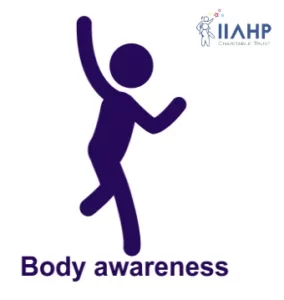
Poor Spatial orientation, or proprioception, is the quintessential definition of Disconnected Children-they simply don’t know where they are in space. They don’t feel grounded. It is very possible that some children with Special Needs haven’t been able to feel their bodies very well from the time they were born.
Special Needs Children who can’t feel themselves in space have a poor sense of gravity and, as a result, are not very good with balance.
Poor Gross and Fine Motor Skills
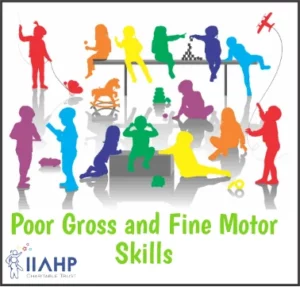
Children with Special Needs have problem with motor skills-their muscles do not move fluidly.
Virtually all these children were delayed and have difficulty in learning how to use their large muscles, what we call gross motor skills. As a result, they usually have poor muscle tone throughout the body. Most noticeable is bad posture and an awkward gait. They have no sense of timing and are uncoordinated or clumsy.
Children with Cerebral Palsy, Down syndrome also often have trouble in manipulating their hands, fingers, toes, and feet-what we call fine motor skills. This most often is displayed later on as poor handwriting.
Poor Eye Coordination

Children may often have a slight imbalance in the tone of the eye muscles. This can appear as lazy eye, in which one eye turns out or doesn’t move with the other. Another sign is an inability to cross the eyes well.
A less obvious sign is poor eye coordination in which both eyes cannot easily track a moving object. One or both may overshoot or undershoot a target when tracking quickly. This contributes to reading difficulties.
Poor Social Skills
Poor social skills are not only a very common symptom of Special Needs Children, they are a significant problem. Sadly, most of these children are very friendly and motivated to have social relationships but they don’t know how to go about it. They do it all wrong.
If a child’s brain is too slow in developing nonverbal communication skills, it will affect his or her ability to “read” people and relate to them socially.
Abnormal Emotional Reactions
A child who is slow in developing nonverbal skills will also have problems of developing emotionally for the same reason. Emotional and social Development is orchestrated by a special network of brain cells called mirror neurons. They subconsciously communicate the emotion of what we see and hear. Mirror Neurons drive the nonverbal communication system that relays laughter, a smile as happiness, crying and a frown as disappointment.
A Child who cannot feel her own body and is not adept at nonverbal communication, however, lacks the skills that distinguish a scream of joy from a scream of fright. Child will struggle making friends and interacting with others, children will simply have no ability to understand emotional expressions. As a result, children will act in socially unacceptable ways.
Sensory Processing Symptoms
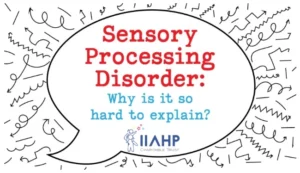
A healthy sensory system is essential to healthy brain development because it is the solo driver of stimulation to the brain. Each sense plays an important role in the journey. When they’re all well tuned, they’ll send signals to the brain like a bullet train. But the once that get off track can slow down the process and make the journey travel like the local train.
How the senses are affected is key in identifying whether the imbalance is in the left or the right hemisphere of the brain. These are the symptoms you’ll be looking for.
Vision
We have found that many children with learning disabilities have normal eyesight but reduced fields of vision. Some of these children can even have large blind spots in their field of vision.
As a result, they will be either oversensitive or under sensitive to light.
Without normal visual processing ability, a child cannot put information together and extract higher-level meaning.
Hearing
A hearing processing problem can manifest as either a high-frequency or low-frequency insensitivity. A child with a high-frequency insensitivity, for instance, will have a problem hearing the sounds of words. A child with a low-frequency insensitivity will have trouble hearing the inflection in someone’s voice that conveys emotions.
Some children can have such sensitive hearing that they are constantly covering their ears because they can’t stand the noise. Some are so sensitive that they will obsessively make high-pitched noises.
Some children can have a problem processing sounds that change rapidly. For example, they may not be able to detect a difference in the sounds ba and da.
Touch
Some children with special needs can be incredibly sensitive to touch. They’ll keep themselves away from the hug and keep a gap when sitting with their family. Others are under sensitive and may be overlay clinging and constantly want to lean on you. They crave touch. It is almost like feeling numb.
At the opposite extreme, children who do not feel pain very well. For example, an autistic child can bang and bang his head against the ground without any pain reaction, touch-sensitive children frequently will dislike light touch-brushing their hair, but will be soothed by deep touch, such as scrubbing the scalp.
Smell and Taste
Kids typically have a limited menu of food they will eat because they have yet to refine their sense of smell and taste. However, some kids don’t like even popular kinds of foods. This is a sign of a brain imbalance.
The sense of smell is one of the most basic senses. Research shows that it is also very important to the ability to learn, memorize, and socialize.
Special Needs Children who do not smell and taste very well judge food not by taste but rather by how it feels in their mouths. They may avoid cookies simply because they don’t like the mouth feel. On the other hand, normally developing kids learn to ignore how food feels and are driven solely by taste and smell, especially if it is sweet. Therefore, a decrease in the sense of smell and taste may have a much greater significance than its effect on eating and food choices.
IIAHP is a whole child approach. To learn more about how our personalized drug-free approach can help your child, contact us online for amazing results. You can also view the testimonials on Our website IIAHP Therapy Center.



